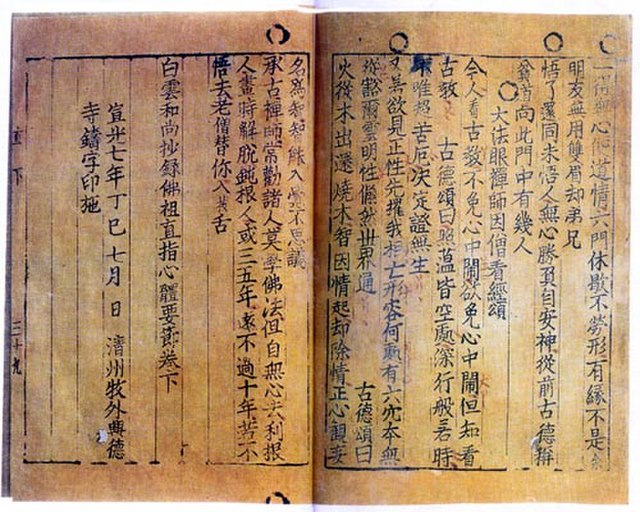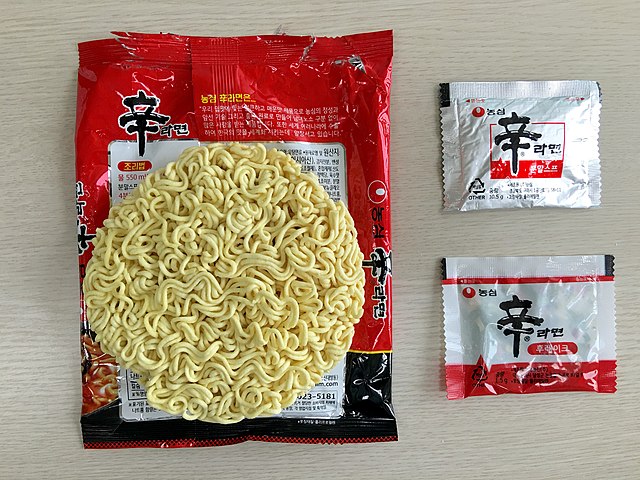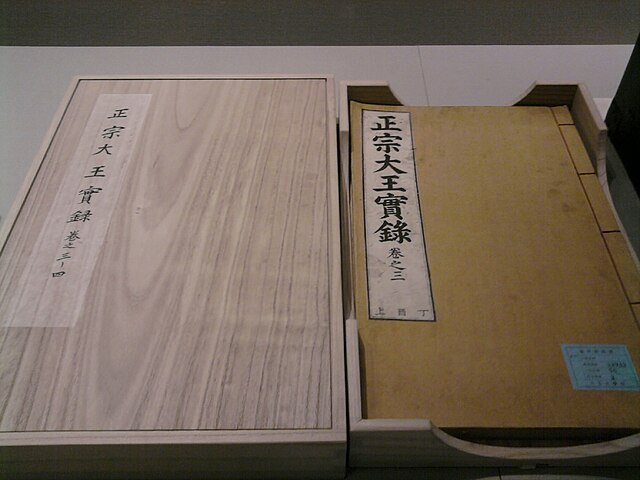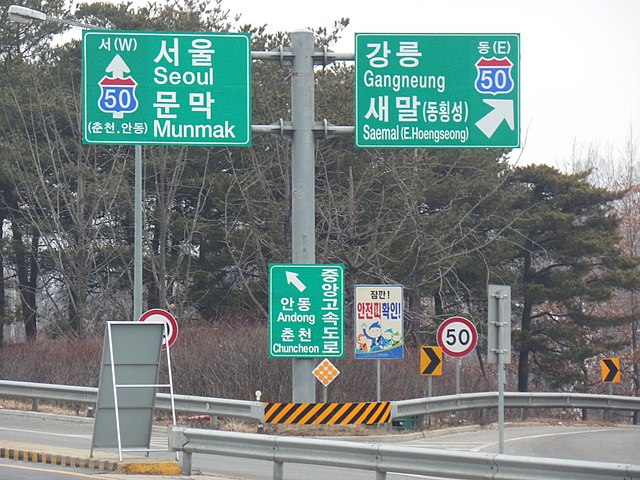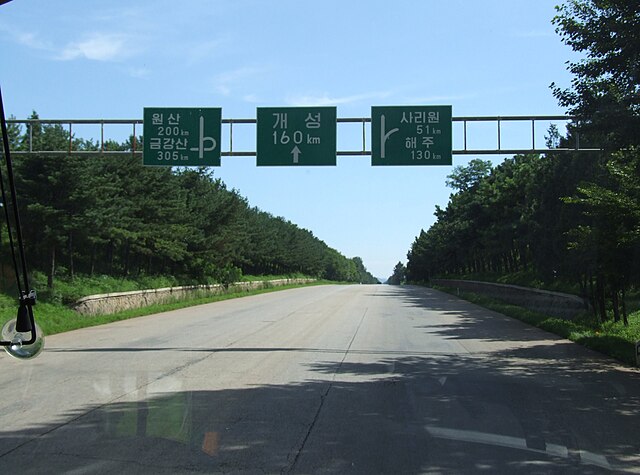Hanja, alternatively known as Hancha, are Chinese characters used in the writing of Korean. Hanja was used as early as the Gojoseon period under the first Korean kingdom.
The calligraphy of Korean scholar, poet and painter Gim Jeonghui (김정희; 金正喜) of the early nineteenth century. Like most educated Koreans from the Three Kingdom period until the fall of the Joseon dynasty in 1910, Gim Jeong-hui composed most of his works in hanmun or literary Chinese.
The Korean Baegun Hwasang Chorok Buljo Jikji Simche Yojeol (백운화상초록불조직지심체요절; 白雲和尙抄錄佛祖直指心體要節) or roughly 'Anthology of Great Buddhist Priests' Zen Teachings' is the oldest example of a book printed with moveable type and was printed in Korea in 1377, but is written in literary Chinese.
A packet of Shin Ramyun, the Chinese character 辛, meaning 'spicy', is prominently displayed
The Veritable Records of the Joseon Dynasty, an annual record of the Joseon dynasty throughout its entire history, was written in Classical Chinese.
Korean is the native language for about 81 million people, mostly of Korean descent. It is the official and national language of both North Korea and South Korea. The language has notable differences in each of the Koreas, in part owing to different official standardizations of the language. They are still largely mutually intelligible, however. South Korean newspaper Daily NK has claimed North Korea criminalizes the use of the South's standard language with the death penalty, and South Korean education and media often portray the North's language as alien and uncomfortable.
The oldest Korean dictionary (1920)
The Latin alphabet used in romanization on road signs, for foreigners in South Korea
Highway sign in Korean, Reunification Highway, Pyongyang, North Korea
Highway sign in Korean and English, Gyeongbu Expressway, Daegu, South Korea


